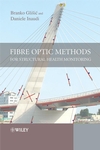U.S. Rep. Steven C. LaTourette (R-Bainbridge Township) today announced that a sweeping bridge safety bill approved by the House includes a study of fiber optic sensors like those developed by companies with offices in Twinsburg and Mentor that can detect stresses on bridges before they collapse or fail.
The House of Representatives today approved H.R. 3999, the Highway Bridge Reconstruction and Inspection Act, by a vote of 367-55. LaTourette said the measure authorizes $2 billion over two years for bridge reconstruction nationwide and requires the Federal Highway Administration (FHWA) to update national bridge inspection standards. It also calls on the FHWA to improve training for highway bridge inspectors. The bill was introduced after the August 2007 bridge collapse in Minneapolis that killed 13 people.
LaTourette said the bill includes language he supported that will authorize the FHWA to study the effectiveness of fiber optic sensors and other sensors in detecting deficiencies in bridges, particularly those under construction or renovation. LaTourette said he believes fiber optic sensors marketed by companies in Twinsburg and Mentor might have detected extreme stresses on the 35W Bridge in Minneapolis before it collapsed. It was loaded with heavy equipment and traffic had been shifted to accommodate construction, he said.
LaTourette said two 14th District companies are marketing cutting edge products that might have been able to avert the tragedy in Minneapolis. Cleveland Electric Laboratories Co. in
Twinsburg is marketing fiber-optic sensors that are attached to bridges to detect and monitor stress loads, and its product is being used on a project in Albany, NY. Roctest Ltd. of Quebec, which has its U.S. office in Mentor, is also marketing a fiber optic sensor system to detect stresses on bridges, and it will be used as the 35W Bridge in Minneapolis is rebuilt.
“We’re lucky that inspectors almost always catch problems and avert tragedies, but there are situations where unusual stresses on a bridge can lead to catastrophe. I think this technology
certainly merits more study so we never experience another disaster like the one in Minneapolis. It’s exciting to have two Northeast Ohio companies right in the mix,” LaTourette said.
LaTourette said construction can place unusual stresses on a bridge, and the small fiber optic sensors can monitor and record the level of stress.
“Who hasn’t been on a bridge where all the traffic is shifted to one side while the other is filled with workers and heavy equipment?” LaTourette said. “If a tiny sensor can detect when stress becomes so great that it makes a bridge susceptible to collapse, that’s a tremendous safety benefit not only for motorists but the workers renovating the bridge.”




No comments:
Post a Comment